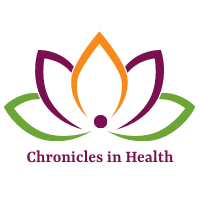Who would have thought that Parabens would be in our food? There has been much information about parabens in personal-care products but not so much with them in food.
Parabens are used primarily to stop mold, harmful bacteria, and yeast which is a positive attribute for them. The actual scientific name for parabens is para-hydroxybenzoic acid esters; parabens is definitely much easier to say; but either name can be on a list of ingredients. The list of items containing parabens includes makeup, moisturizers, hair-care products, shaving creams, pharmaceuticals, foods, and drinks. The cosmetic industry has been proactive about removing them from their products. You will see some products touting “paraben-free”.
This is because of a few studies that showed negative results from paraben usage: 1) One study showed a link to decreased sperm count in young rats, 2) paraben was found to be in the urine of several participants of a study, with women having a much higher concentration, and 3) parabens where found in breast cancer tissue.
According to the Environmental Working Group, some parabens are considered hormone disrupting and may affect fertility, especially in developing children. This is one of the reasons Johnson & Johnson pledged to remove items from the paraben family from all baby products.
There are several forms, the list of parabens includes methylparaben, ethylparaben, propylparaben, and butylparaben. When reading labels, if a word ends in paraben, you know some form of the chemical is in the product. The Food and Drug Administration (FDA) does require that all parabens must be listed on the ingredient list; and single or multiple parabens can be added to food or food packaging as an antimicrobial to prevent food spoilage.
In 2006, the European Union removed propylparaben from the authorized list of additives that could be used in food. Research had shown this paraben may affect the endocrine system, act as a synthetic estrogenic compound, alter hormone signaling and gene expression. The Harvard School of Public Health found that it may be associated with diminished fertility. Methylparaben may raise the risk of cancerous skin damage from skin-care products used when exposed to the sun; and some have incurred allergic reactions from its use. Some of the studies did not have control groups and other questionable practices. Due to these conditions, more research is beginning to be done on whether parabens are safe; the bottom line is that no conclusive evidence has been determined either way thus far.

Foods containing parabens include beer, sauces, desserts, soft drinks, jams, pickles, frozen dairy products, processed vegetables, and flavoring syrups. Some foods contain naturally occurring parabens – blueberries, strawberries, and olives.
Should we be concerned about parabens? Parabens naturally occurring on fruits and vegetables probably is not a problem. The challenge could arise if you eat a lot of processed foods containing them and use personal-care products that also have parabens. Testing is done with one product at a time and no cumulative studies are done, so one product may not be a problem but what happens if you are being exposed to several products? These are questions that need to be answered. For my clients, I encourage them to eat whole food products and use personal-care products that limit many of these types of chemicals. We don’t live in a perfect world, but we can limit our exposure as best as we can.
Did you know that parabens could be in our food? Do you use paraben-free personal care products?
Be blessed and be a blessing,
Heather
Posts may contain affiliate links. If you purchase a product through an affiliate link, your costs will be the same but Chronicles in Health will receive a small commission. This helps cover some of the costs for this site. I appreciate your support!
The information, including but not limited to, text, graphics, images and other material contained on this website are for informational purposes only. The purpose of this website is to promote broad consumer understanding and knowledge of various health topics. It is not intended to be a substitute for professional medical advice, diagnosis or treatment. Always seek the advice of your physician or other qualified health care provider with any questions you may have regarding a medical condition or treatment and before undertaking a new health care regimen, and never disregard professional medical advice or delay in seeking it because of something you have read on this website.



